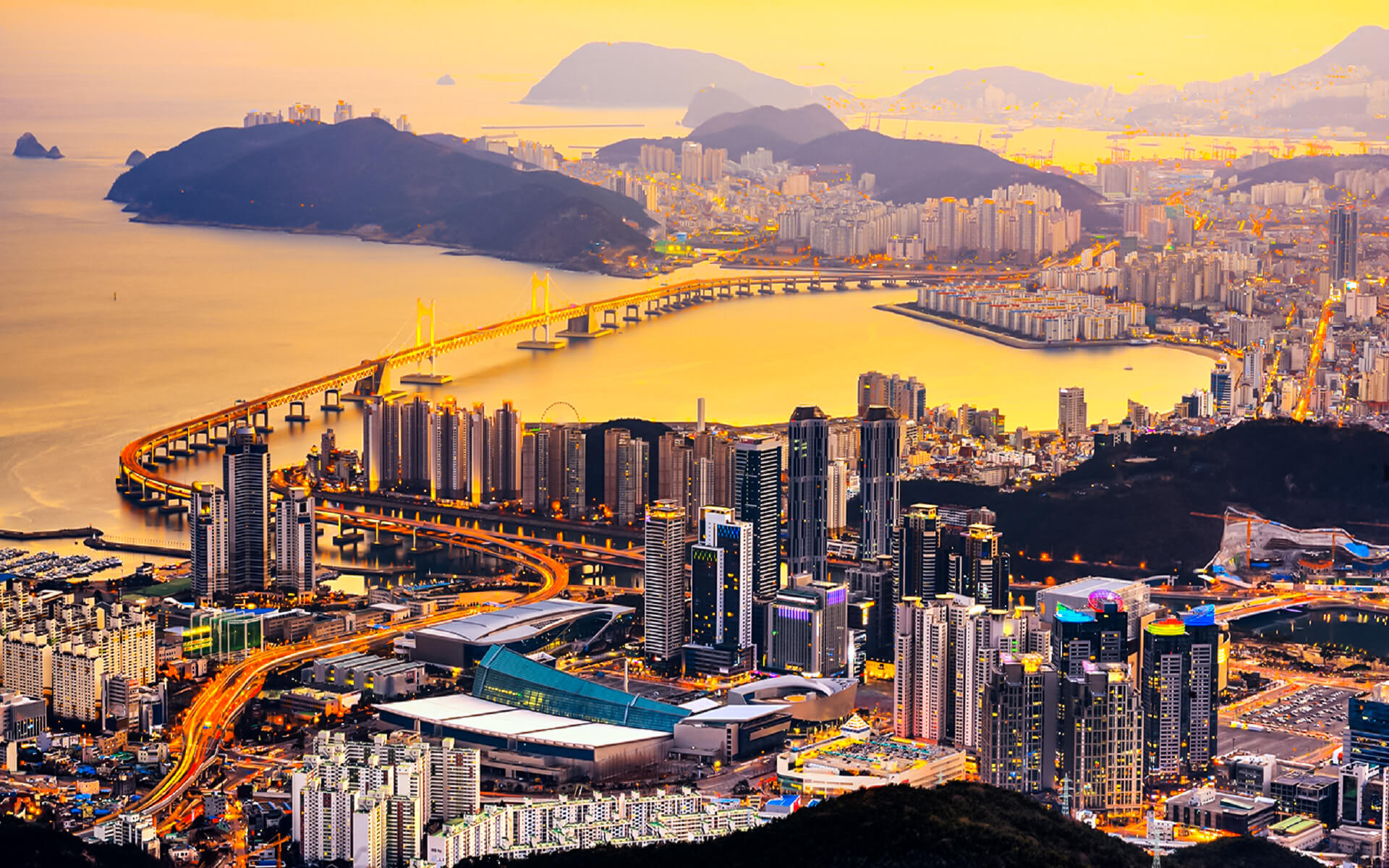Busan has a wide range of antique and souvenir stores, as well as distinctive restaurants, sights, and lodging.
PARKS, BEACHES, AND POINTS OF INTEREST
Nampo-dong is a renowned retail and café neighborhood in the city center. Many cafés, pubs, and restaurants attract college students and youngsters in the neighborhood around Pukyong National University and Kyungsung University.
Busan is known as Korea’s summer capital because its six beaches draw visitors from all across the nation. The beach in Haeundae is lined by luxury hotels and a carnival boardwalk. Cafes, bars, and restaurants along Gwangalli Beach, as does the Grand Gwangan Bridge. Dadaepo Beach on the city’s western outskirts and Songdo Beach on the city’s southern outskirts are two more beaches.
To the west, Geumjeongsan is a favorite weekend hiking destination for Busan locals. To the north, the areas around Pusan National University (commonly known as PNU, which is one of Korea’s most prestigious national schools of higher learning) contain student theaters, cafés, pubs, and restaurants, as well as open-air cultural street performances on weekends. Beomeosa, the city’s primary Korean Buddhist temple, is nearby.
The Busan Tower, Yongdusan Art Gallery, and the Busan Aquarium are all located in Yongdusan Park, which spans 69,000 square meters/17 acres (7 hectares). The park is home to over seventy different tree species and is a popular tourist attraction, hosting a variety of cultural events throughout the year.
Dongnae-gu is a rich and historic neighborhood. Dongnae Oncheon is a natural spa resort with several spas, tourist hotels, restaurants, clubs, and retail centers. Many of the eateries in the neighborhood rely on family recipes. Chungnyeolsa is a Confucian temple dedicated to troops who perished during the 16th century fight at Dongnae Fortress against the Japanese.
Taejongdae is a natural park on the island of Yeongdo with spectacular cliffs overlooking the open sea.
Many stores cater to the local Russian community as well as the sailors of foreign ships in the area named as “Foreigners’ Shopping Street,” but generally referred to as “Texas Street” near part of the Port of Busan and close to the front entrance to the Busan Train Station (). The region was formerly home to the local Chinatown, and it still has a Chinese school.
The Busan Aquarium, situated on Haeundae Beach, is South Korea’s biggest aquarium. The temple of Haedong Yonggung is one of three holy sites associated with the Goddess Buddha. It is placed directly on the beach. It is surrounded by a mountain in the front and the sea in the rear.
Gamcheon-dong is a secret hillside region inside the city with high, sweeping views of the ocean and brilliantly painted residences. It is situated west of Nampo-dong.
Busan Citizens Park (previously Camp Hialeah) is a former Imperial Japanese Army garrison and United States Army camp in the Busanjin District of Busan, South Korea.
TEMPLE, RELIGIOUS, AND HISTORICAL LOCATIONS
- Beomeosa Temple
- Busanjinjiseong Fortress (or Jaseongdae)
- CheonseongjinseongFortress
- Chungnyeolsa Shrine
- DongnaeeupseongFortress
- Dongnae Hyanggyo Confucian shrine-school
- Dongnaebu Dongheon
- Dongsam-dong Shell Mound
- Fortress site of Jwasuyeong
- GeumjeongsanseongFortress
- Haedongyonggungsa Temple
- Janggwancheong
- Jeongongdan Altar
- Samgwangsa Temple
- Songgongdan Altar
- Tumuli in Bokcheon-dong, Dongnae
- United Nations Memorial Cemetery
- Waeseong in Jukseong-ri, Gijang
- Yeongdo Bridge
- Yeonggadae Pavilion
- Yungongdan Altar
ARTS
Every autumn, Busan holds the Busan International Film Festival (BIFF), one of Asia’s most prominent international film festivals, at the Busan Cinema Center. It also hosts the Busan Biennale, an international contemporary art biennale held every two years.
In 2005, it also hosted the 2nd Asia Song Festival, which was organized by the Korea Foundation for International Cultural Exchange.
In 2012, Hendrik Beikirch, a German artist, collaborated with Public Delivery to create Asia and the world’s highest mural.


